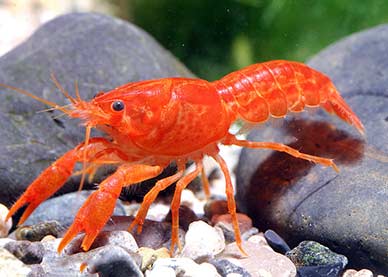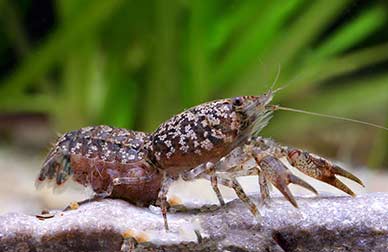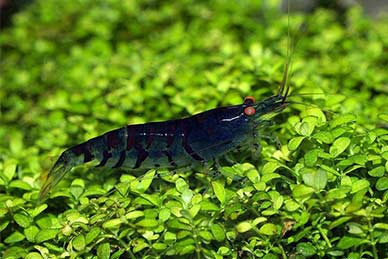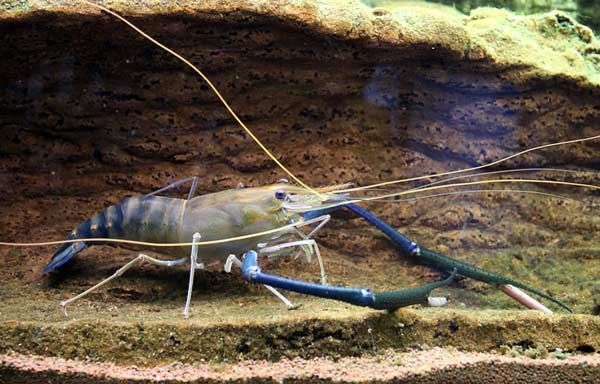
Macrobrachium Rosenberg

Macrobrachium Rosenberg, scientific name Macrobrachium rosenbergii, belongs to the Palaemonidae family. It is considered one of the largest freshwater shrimp, growing up to 30 cm in length and up to 50 cm, given the size of the claws. Weight can reach up to 500 gr.
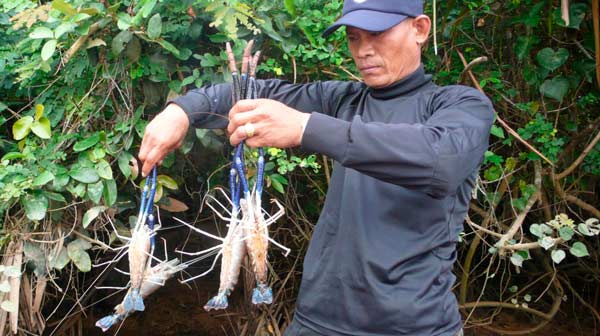
Equally an ornamental species and a popular food product. It can often be seen not only in aquariums, but also on the shelves of Asian markets, in supermarkets and on the menu of cafes and restaurants.
Contents
Habitat
The original natural distribution range was limited to the Indo-Pacific region from India, along the whole of Southeast Asia and up to the northern regions of Australia.
However, success as a commercial food product has led to the fact that this shrimp was brought to and grown in East Asia (China, Japan, Korea), New Zealand, Africa, America in the Caribbean.
Description
In addition to its impressive size, Macrobrachium Rosenberg is distinguished by a contrasting color. Mostly brown colors predominate, but blue hues are present in dominant males. At a young age, the bodies are lighter.
Males go through three stages as they mature. The first is the “little male”, which has small claws with a transparent shell. The second is “red-armed”, the claws are painted orange or red, and their size reaches 1.5 body lengths of the shrimp. The third and final stage is “blue-handed”, the claws become bright blue or blue, and the size is twice the length of the shrimp.
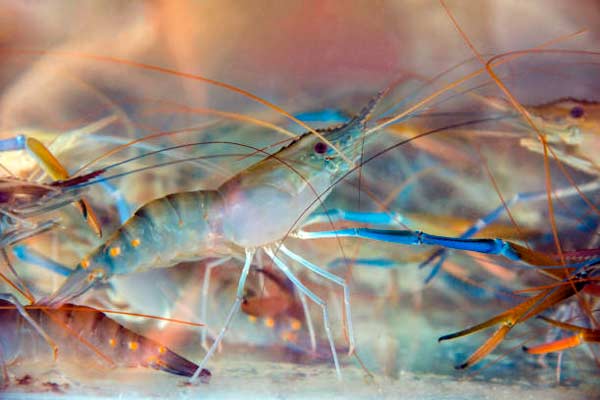
There is a strict hierarchy within the population. If a “blue-handed” male is present in a group in a certain territory, then he delays the transformation of other males to the next stage. They will be able to increase their rank only when the adult “blue-handed” male disappears from the population. Moreover, at all three stages they are sexually active and can give offspring.
In the wild, life expectancy is about 1.5 years, in the artificial environment of aquariums they can live a little longer.
This is a wandering view. During its relatively short life, the shrimp travels more than 1000 km along the river and back, which is due to the characteristics of reproduction. Although Macrobrachiums live in fresh water, the egg and larval stages must take place in salt water.
Behavior and Compatibility
Mobile shrimp with not the most friendly disposition. Macrobrachium Rosenberg are able to live in groups in spacious tanks. However, if one of the individuals is weakened or seriously injured during a skirmish (relevant for males), then it is likely that it will soon become food for its relatives.
Also, smaller fish can become food, and larger species can be injured or injured.
It is permissible to keep together with large non-predatory fish that live in the water column or near the surface. As bottom dwellers, you can consider catfish with reliable protection, for example, Bronyakovy or Corydoras.
Maintenance and care, arrangement of the aquarium
For 2-3 shrimps you will need a spacious aquarium from 500 liters. If there is only one male in the group, the volume can be reduced. In the design, the focus is on the lower tier. It is important to provide plenty of appropriately sized hiding places from piles of rocks, driftwood, and other decorative items.
Rooting plants may be damaged. It is recommended to use species that can grow on the surface of snags and stones, such as numerous aquatic mosses and ferns.
Water parameters are not significant, which led to the successful acclimatization of this species in most tropical regions of the planet. The only limitation is very soft water with low carbonate hardness. Under such conditions, shrimp will lack calcium, which causes problems with growth and the formation of a chitinous shell.
Shrimps do not create a large biological load, so the maintenance and maintenance of the aquarium is standard. It is necessary to regularly replace part of the water with fresh water and remove accumulated organic waste.
General hardness – 8–20°GH
Value pH — 7.0–8.0
Temperature — 18–30°С
Food
They eat whatever they can find or catch. The optimal diet consists of a balance of plant and protein foods. You can serve granular or tablet form, spirulina flakes, conventional fish foods rich in herbal supplements, as well as big bloodworm and gammarus, dried shrimp, fresh or frozen earthworms, and other popular foods.
Breeding and reproduction
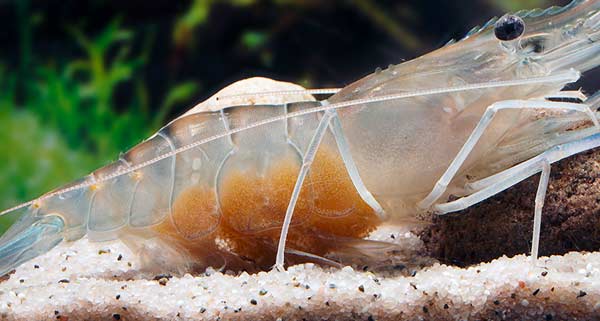
Breeding in an aquarium is hardly possible due to the need for salt water. In nature, shrimp migrate closer to river estuaries. At the end of spawning, the eggs, picked up by the current, are carried away into brackish waters. Plankton larvae live in sea water. After about a month, having reached a size of about 1 cm, they migrate back to fresh water.
Sources: en.wikipedia.org, aquariumglaser.de



